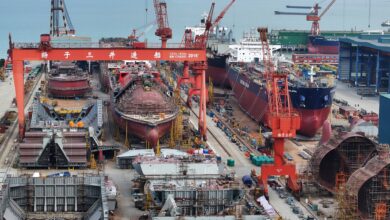
Thousands of protesters have thornged into Pakistan’s capital, Islamabad, breaching security barriers and a government-enforced lockdown, to demand the freedom of former Prime Minister Imran Khan. The protesters, majority from Khan’s PTI, clashed with security forces on Tuesday while trying to reach D-Chowk, a main square, amid the use of tear gas and rubber bullets. Shortly after noon, many had reached the square.
The government then invoked Article 245 of the constitution, which allowed it to call in the army to aid the civil power in maintaining law and order.
Convoys started reaching Islamabad on Sunday from different parts of the country, which were being led by PTI leaders. The main convoy, however, emerged from Peshawar under the leadership of Bushra Bibi, wife of Imran Khan, as she warned that protests will continue until her husband is released.
Before the protests started, police detained more than 4,000 people across the country and blocked mobile and internet services in order to limit communication within the ranks of protesters.
Imran Khan, 72-year-old, has been in and out of prison since his first arrest on May 9, 2023, in a corruption case. He was released by the Supreme Court and then arrested again in August over other charges that the PTI says have been politically motivated.
Apart from the release of Khan, PTI is demanding the revoke of recent constitutional amendments that critics say compromise judicial independence. The 26th amendment, approved in October, changes the composition of the judiciary and curbs the powers of the Supreme Court-which opposition leaders have decried as an assault on independent judiciary.
Protesters also want what they describe as a “stolen mandate” returned, referring to the general elections in February that were marred by allegations of vote rigging. Members of PTI accuse the ruling coalition, which includes PML-N and PPP, of this electoral fraud.
Clashes on through Tuesday, with reports saying that at least four paramilitary personnel and two policemen are dead, many more injured. The capital is under complete lockdown with educational institutions shut and public gathering banned.
Despite the chaos, the visit of Belarusian President Aleksandr Lukashenko to Pakistan went according to schedule as he was received by Prime Minister Shehbaz Sharif at an airbase in Rawalpindi. Sharif denounced the protests, saying they were driven by elements desiring bloodshed rather than genuine democratic reform.
Demonstrators achieved D-Chowk, a location synonymous with protests, looking to establish a sit-in near key government buildings. They breached barriers-large shipping containers and barbed wire-as security forces used stun grenades and tear gas against them.
Federal Interior Minister Mohsin Naqvi warned the protesters against a march to the Red Zone and vowed “extreme measures” in case of crossing the line. He said that in a meeting with PTI representatives, alternatives were offered as protest sites.
As tensions have persisted, internet disruptions have persisted throughout Pakistan, which interferes with communication and media sharing by protesters. The situation is still fluid as the authorities gear up for further development.



